|
page 2
The World's First Oil Gusher
The spring pole method of drilling led to the greatest oil find
of the era. In July 1861, Hugh Nixon Shaw arrived in Oil
Springs, short on money but long on determination. Near
bankruptcy, after six months of back-breaking work Shaw
was about to quit the oil business. On January 16, 1862,
at a depth of 157 feet, a loud crack announced the world's
first oil gusher. Drilling tools were flung sky-ward and
oil shot above the treetops. Two thousand barrels of oil per
day flowed from the well until it was brought under control in
early February. Nixon's huge find set off a rush to drill
additional deep wells. Many flowing wells were brought into
production including the record-setting Black and Mathieson
well, which initially produced 7,500 barrels per day.
A local innovation, the jerker line system for producing oil
, pumped crude from a number of wells at one time using a
single power source.
|
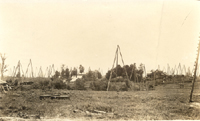
Original Oil Field.
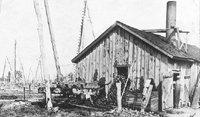
Mr. Whitehead
and oil field
|
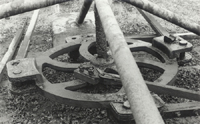
Horizontal Wheel
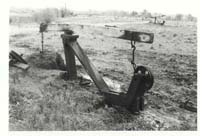
Walking Beam
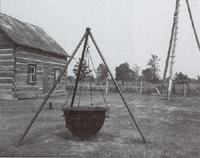
Refining Still
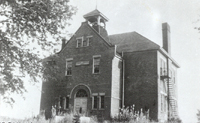 School
School |
More than twenty refineries were erected at Oil Springs,
but they could not keep pace with the
abundant flow of oil. Therefore, crude was also shipped
by waterway to Great Britain, by wagon along newly-built
roads to Sarnia and Wyoming, and by rail to London and
Hamilton. These were heady times for the busy centre, now that
James M. Williams had put Oil Springs on the world map by winning
awards at the 1862 International Exhibition in London,
England. He received medals for his discovery of oil and for refining it
into quality lamp oil.
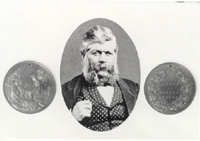 Williams and his Medals
Williams and his Medals
|
| The Decline of Oil Springs |

Oil Springs circa 1867
|
The great surge of oil from Oil Springs, coupled with increased
U.S. production, helped to deflate the price of oil to less
than one dollar per barrel. At the same time, production from
the big flowing wells began to diminish, and worn-out refining
equipment was not replaced. Many oil producers and merchants
literally moved their homes and shops to Petrolia, eight miles
to the northwest. Freshly drilled wells with steady oil flow
were more attractive than Oil Springs' dried-up gushers. The
population of Oil Springs fell to 550 and after 1865, the only
new structure to be built was the Masonic Hall.
In the early 1880s, the price of oil rose and revived crude
production in Oil Springs for a time. By 1898 production
reached 133,000 barrels per year, but the size and grandeur of
the original boom was never repeated. |
The Significance of Oil Springs
Although the original boom at Oil Springs was short-lived, it
had dramatic impact on the fledgling oil exploration,
production and refining industries.
Oil Springs not only
supplied the oil resource for the first commercial ventures,
but its residents acquired the technical know-how and devised
the innovative equipment to both produce and refine the crude.
|
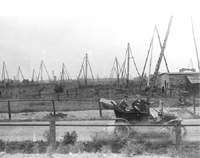
Oil Fields
|
| Drillers from Oil Springs and Petrolia traveled the globe from 1874 to the 1940s to discover and develop oil fields. The concentration of refining and chemical plants in Canada would not exist if not for the oil discovery at Oil Springs a century earlier. The vast complex stretches south from Sarnia for fifty kilometres, manufactures hundreds of
different products, and employs thousands of people. |
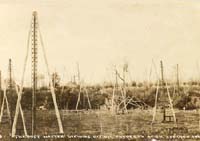
Oil fields, Oil Springs
|
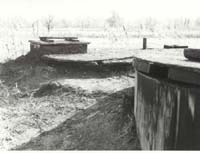
Holding Tanks
|
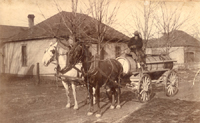
Thomas Burrowes
Kelly Road, 1909.
|
Oil Springs Today
The pride in accomplishments long-past and a sense of history
have not been lost on late twentieth-century Oil Springs. Many
of the population of 800 are still involved in oil,
petrol-chemical, and related industries.
|
|
|
![[back to main]](../ui_img/footer.jpg)
![[back to main]](../ui_img/footer.jpg)